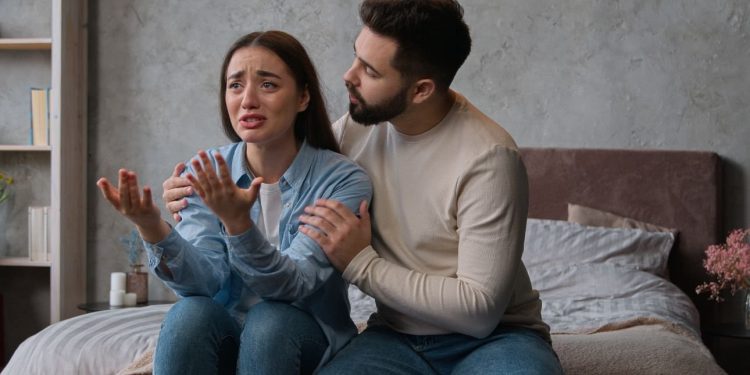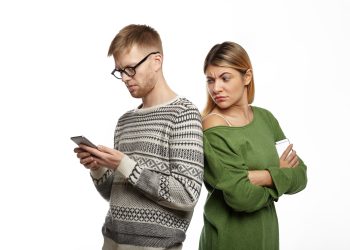Have you ever looked back on your relationships or friendships and thought, “Why does this always happen to me?” Why We Attract the Same People is a deeper emotional pattern most people don’t realize until it hurts. Different people, same patterns. It’s like being stuck in a loop — emotionally unavailable partners, one-sided friendships, or people who drain you rather than lift you.
If this sounds familiar, you’re not broken — you’re just operating on unconscious patterns that can absolutely be changed.
In this in-depth guide, we’ll explore:
- Why you keep attracting the same kind of people
- How trauma, beliefs, and identity play a role
- Practical steps to break the cycle
- How to align with healthier, more fulfilling relationships
Let’s unpack it all — step by step.
1. Familiarity is Comfortable — Even When It Hurts
Understanding Why We Attract the Same People is the first step to breaking the cycle. One of the biggest reasons we attract similar people is this: what’s familiar feels safe, even if it’s harmful.
Most of our patterns come from our formative years — childhood experiences, emotional neglect, or even witnessing dysfunctional relationships. Your subconscious stores these emotional templates as “normal,” and without realizing it, you begin to:
- Gravitate toward what you know
- Feel uneasy around what’s actually healthy
- Repeat dynamics that mimic your past
👉 For example, if love was inconsistent growing up — sometimes warm, other times withdrawn — you may feel magnetically drawn to hot-and-cold partners. Sometimes, inconsistency might feel like love because it’s what you’ve known. That’s one powerful reason Why We Attract the Same People who repeat what we once called “love.”
Pattern Recognition Exercise:
Write down 3 significant relationships or friendships. What were the emotional themes? (e.g., “I always had to chase,” “I never felt enough,” “I gave more than I received”).
You’ll likely notice the same core wound repeating.
2. Your Unhealed Wounds Are Doing the Choosing
Attraction isn’t just chemistry — it’s deeply psychological.
We subconsciously seek people who mirror our unhealed emotional wounds. If there’s a part of you that believes you’re not lovable unless you overgive, you’ll attract takers. If you fear abandonment, you may attract people who are emotionally distant, confirming your fear.
This is called trauma bonding, where unresolved trauma drives the bond more than compatibility, values, or emotional safety.
The problem? These bonds feel intense and addictive, not necessarily healthy.
That confusion is at the root of Why We Attract the Same People, who feel familiar but don’t help us grow.
🔍 Ask yourself:
“Am I choosing this person because they feel familiar… or because they feel safe, stable, and aligned with who I want to become?”
3. You Become a Magnet for What You Believe You Deserve
You don’t attract what you want. You attract what you believe you deserve.
This is where self-worth plays a huge role. If deep down, you believe:
- “Love must be earned.”
- “I’m not enough.”
- “All the good ones are taken.”
- “People always leave me.”
Then your reality will mirror those beliefs.
Even if you say you want a loving, respectful partner… your subconscious programming may be pulling you in the opposite direction.
These beliefs are often formed from early rejection, childhood criticism, betrayal, or social conditioning. And until they are rewritten, they’ll keep silently guiding your choices. They create the inner script behind Why We Attract the Same People, who reflect our self-doubt.
4. Identity Plays a Role: Who Do You Think You Are?
Your identity silently dictates your relationships.
If your sense of self is wrapped around being the helper, the fixer, the loyal one, or the “strong one who never asks for help,” you’ll unconsciously attract people who need saving or people who take advantage of that strength.
Sometimes we stay in familiar roles because stepping into a new identity (e.g., “I deserve to be nurtured,” “I can be vulnerable,” “I don’t have to prove my worth”) feels scary or uncomfortable.
To change who you attract, you may need to shift who you believe you are.
5. Emotional Addictions: The Highs and Lows
Here’s something most people don’t realize: some of us are emotionally addicted to the highs and lows of dysfunctional relationships.
This is especially true if you confuse anxiety for attraction. The butterflies, the overthinking, the emotional rollercoaster — it can feel like passion, but it’s actually your nervous system on survival mode.
Healthy love might feel “boring” because it lacks chaos. But boredom isn’t a red flag — it could be peace knocking on your door.
🧠 So, How Do You Break the Cycle?
Great question. Let’s move from awareness to aligned action. But before that, let’s reflect once more on Why We Attract the Same People without knowing we’re doing it.
1. Identify Your Patterns
Awareness is the first key to freedom.
Look back at your past 3-5 relationships or deep friendships. What traits did these people share? Were they emotionally unavailable, critical, avoidant, controlling, needy?
Reflection Questions:
- What roles do I usually play? (Rescuer, pleaser, chaser?)
- What red flags did I ignore early on?
- What emotions were common in these dynamics? (Anxiety, loneliness, rejection?)
2. Heal the Root Wound
Patterns don’t change at the surface. You have to go deep.
Start inner healing through:
- Therapy or trauma-informed coaching
- Inner child work: Revisit the child in you who didn’t get their needs met. Re-parent them with love, safety, and validation.
- Shadow work: Acknowledge the parts of you that feel shame, fear, or pain and integrate them instead of suppressing.
When you heal, your attraction point shifts. What used to thrill you will now repel you. What used to bore you will now soothe you.
3. Rewire Limiting Beliefs
Beliefs shape your behaviour. Upgrade the old stories.
🧠 Examples:
- From: “I’m always too much.”
To: “The right person will celebrate all of me.” - From: “Love always hurts.”
To: “I attract love that heals, not harms.”
Use:
- Affirmations
- Journaling
- Guided meditations
- NLP techniques (Neuro-Linguistic Programming)
Repetition and emotional energy are key here. Change the internal script, and you’ll change who answers the call.
4. Set Boundaries Without Guilt
The people you used to attract may not like the new you — and that’s okay.
As you grow, your boundaries will tighten. You’ll stop explaining, over giving, or tolerating emotional crumbs.
Start practicing:
- Saying no without overexplaining
- Walking away from inconsistency
- Protecting your peace as a priority
Every time you honour your boundaries, you raise your self-worth — and lower your tolerance for chaos.
5. Learn What Healthy Feels Like
Sometimes we don’t know what to look for because we’ve never experienced it.
- Consistent, not confusing
- Supportive, not draining
- Honest, not manipulative
- Grown through communication, not guesswork
Don’t mistake peace for boredom. Don’t confuse anxiety with chemistry.
The more peace you cultivate inside, the more it becomes your standard outside.
6. Date From Your Healed Self, Not Your Wounded One
Here’s the shift:
You’re no longer looking for someone to complete you. You’re looking for someone who aligns with you.
Stop choosing partners based on:
- How much can you help them
- How much do they “need” you
- How chaotic or thrilling the dynamic feels
Choose people who reflect your growth, peace, and purpose — not your pain.
Final Thoughts: You Don’t Need to “Earn” Love
If you’ve been stuck in relationship cycles that drain or hurt you, it’s not because you’re unlucky in love — it’s because you’re finally being invited to heal.
You deserve love that feels safe. You deserve relationships where you don’t have to dim, shrink, or chase. And yes — that kind of love exists. And it starts by understanding Why We Attract the Same People and no longer settling for less than we deserve.
But it begins with you.
💡 When you become the person you’ve been waiting for, you’ll stop settling for people who aren’t ready for your light.




